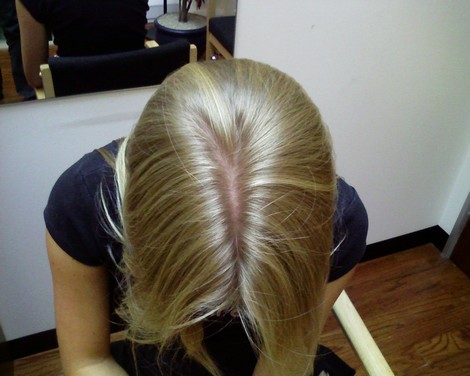Female Hormonal Fluctuations and Hair Loss
Women often experience problems with their hair, which may range from developing brittle hair shafts with split ends to massive hair shedding, when they get through hormonal changes brought forth by pregnancies, taking or stopping hormonal medications, such as birth control pills, or entering the mid-life menopausal transition.
The cosmetic beauty of female hair can decrease in response to various events in the life of a woman, said Dr. Zoe D. Draelos, a renowned dermatologist who recently spoke at the conference of the American Academy of Dermatology. She also pointed out that, while women usually have the healthiest hair in their 20s, age-related hormonal fluctuations, birth control pills, and pregnancies could be common triggers of female hair loss.
When a woman starts taking birth-control pills, she artificially increases the levels of circulating estrogen, which often results in developing thick, radiant hair. However, when the woman stops taking the pill, the levels of estrogen plunge abruptly, which can induce massive shedding of hair in about three months after the discontinuation of treatment. Unfortunately, doctors rarely warn women that taking off estrogen-generating oral contraceptives can induce hair loss, which in some cases can be irreversible.
Pregnancy is another significant event in the life of a woman, which can be linked to a temporary or permanent loss of scalp hair. During pregnancy, women usually experience hormonal fluctuations that favour the growth of new hair. An increased secretion of certain pregnancy-related female hormones stimulates the hair follicles to enter the stage of rapid “hair production”, which results in gorgeous, thick locks that many pregnant women have. However, within about six months after the delivery of a baby, the hormone levels drop and the hair starts falling out. In most cases, the lost hair will re-grow, but massive hair shedding during the postpartum period is still a big stress for the woman, which can even contribute to the developing of after-pregnancy depression. Another troubling fact is that some cases of postpartum hair loss do not resolve spontaneously, particularly in women who have an inherited susceptibility to female-pattern baldness. At that point, if the hair does not re-grow within one year or so, it is advisable that the woman should seek a help of her physician.
Periomenopausal changes in the late 30s - early 40s are yet another common trigger of female hair loss. A graduate decrease in the hormone estrogen can stimulate irreversible changes in hair: noticeable thinning, especially in the frontal scalp area; diminishing of the hair shaft diameter, which makes hair look brittle and frail; and a decreased hair growth. These unfortunate changes can further progress during the menopause and are often combined with a graduate loss of the hair pigment and developing greying hair.
To correct hormonally-induced hair loss, Dr. Draelos recommends a consultation with a reliable dermatologist, who can correctly determine the cause of female hair problems and prescribe effective pharmaceutical treatment. In addition, some natural steps can be taken by menopausal women to stop the progression of hair shedding and to mask thinning shafts and other cosmetic problems.
A good measure is to cut down on the frequency and length of hair-grooming procedures, especially such hair-damaging ones as chemical colouring, permanent waving, and strengthening with a flat iron. Another step is to protect hair from the exposure to direct sun light, too much brushing, and excessive spraying, gelling and shampooing that further strips the locks from their valuable natural oils.
Recommended hair products for aging women include a high-quality, protein-based conditioner that can thicken the hair shaft and considerably increase the strength of hair.
Robin Makris
Posted on May 21, 2008
Filed Under Hair Loss, Hair Loss Reasons
Comments
Leave a Reply

